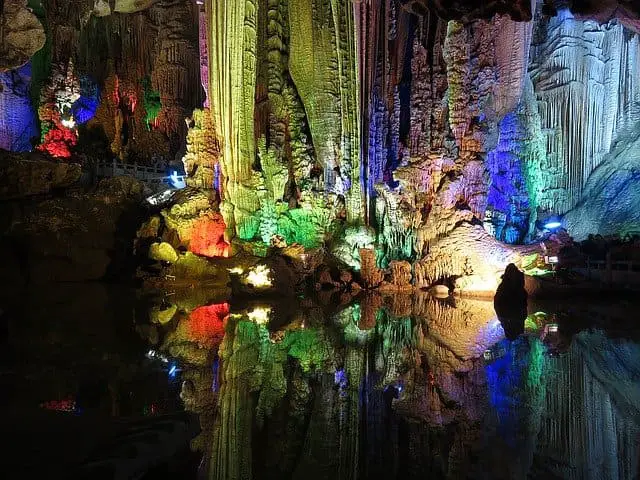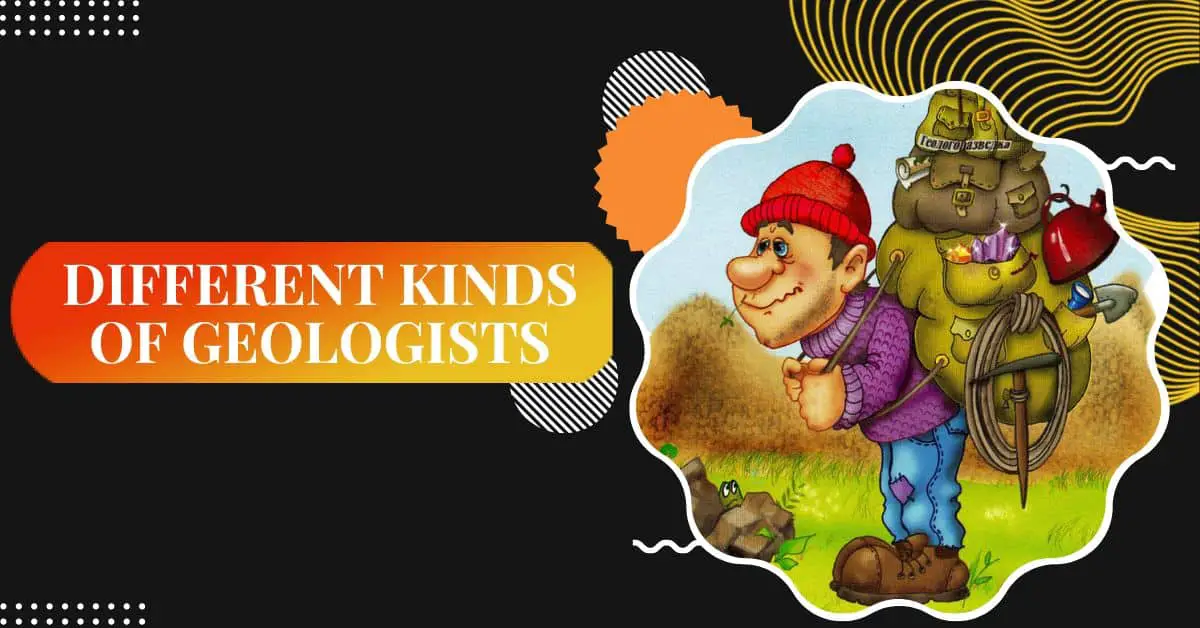Earth’s surface is always and constantly in changing processes. Rocks are disintegrated and decomposed, moved by wind, water, and ice to lower elevations by the force of gravity. The weathering process is an essential part of the rock cycle and it is responsible for transforming solid rock into sediment by breaking down pre-existing rocks. On the other hand, erosion is a process of transporting broken particles of rocks (sediment) by mobile agents such as wind, ice, water, or gravity.
Weathering changes rock materials and forms the Earth’s surface topography, turning all types of rocks into sediments and soils.
Weathering is caused by numerous different factors, such as wind, the Sun’s energy, moving ice, streams, the actions of plants and animals, and chemical reactions.
Weathering has a role to make uplifted rocks or rock that forms deep within the Earth’s crust in equilibrium with a new set of environmental conditions. For example, igneous rock or metamorphic rock forms deep in the Earth where the pressure and temperatures are very high with no water or oxygen present. At the surface, these same rocks are exposed to low temperatures and pressure, the atmosphere, water, and the activities of animals and plants to make new rocks through the weathering process.
Weathering is a very important process that demonstrates the interactions among Earth’s systems.
Types of Weathering
There are two major types of weathering, physical or mechanical and chemical weathering. They are working together and enforcing each other to weaken the rocks. Chemical weathering debilitates rocks and makes them easily affected by physical weathering as the smaller pieces of rocks are made by physical weathering, the greater the surface area available for chemical weathering.
Physical weathering is common in arid climates, while chemical weathering is common in humid environments.
In chemical weathering minerals will change to new ones due to the exchange of minerals elements to form new compounds through the dissolving process. This happens because of the existing minerals in not stable in the new environment.
Physical Weathering
Physical weathering is when rocks are broken down into small fragments without changing their chemical composition through physical activities.
Physical activities can be tectonic forces, rain, temperature, streams, ocean currents, waves, wind, glaciers, and living organisms.
Rocks have their natural zones of weakness which tend to break easily. These zones are bedding planes in sedimentary rocks formed by sequential layers of solidified sediments. Also, foliated metamorphic rocks have parallel cleavage planes which allow them to be split readily such as slate and schist. However, massive rocks that don’t have planes or cleavage tend to break along regular fractures called joints.
The activity of organisms plays a major role in weathering from microorganisms to huge ones. I think most of us have seen a crack in a rock that has been expanded by a tree root.
Frost wedging is one of the most effective mechanisms for enlarging cracks in rocks. When water exists in these cracks and then freezes, it expands, exerting an outward force strong enough to wedge open a crack and split a rock.
Another type of wedging is formed when elements of water start to crystallize inside the cracks and then expanding process occurs to break the rocks. Examples of these minerals are gypsum and halite.
Physical weathering creates more surface area for chemical weathering.
Chemical Weathering
Chemical weathering is the process of chemical reaction that decomposes minerals and changes them into different minerals.
Chemical weathering will produce dissolved ions and molecules that flow in the water of rivers and oceans.
Chemical weathering exists in our daily life, the caves you visited on your last vacation and the rust color in your car, and many more.
Three types of chemical weathering are hydrolysis, dissolution, and oxidation. These reactions either change the composition of minerals or remove them.
Dissolution happened when a substance dissolves in a solution. For instance, when you add sugar or salt to a cup of hot water, it will quickly disappear.
The dissolution of rocks occurs when minerals in rocks are dissolved by water. Chemical sedimentary rocks are good examples of this type of weathering like limestone. Also, clastic sedimentary rocks such as sandstone and siltstone are cemented with soluble minerals causing the rock to become loose sediments.
The major acid involved in chemical weathering is carbonic acid(H2CO3) formed by the reaction of Carbon dioxide (CO2) and rainwater. Limestone and marble can be dissolved by this acid to form caves, sinkholes, and underground streams. If the acidity increases, more dissolution occurs. Acidity increases by air pollution from cars and industrial work.
Biological weathering
Biological weathering is a type of weathering process that occurs when plants, animals, and microorganisms interact with rocks and minerals to alter their physical and chemical composition. This type of weathering is especially important in breaking down rocks in soil and producing new soils. Some of the ways biological weathering occurs include:
-
Plant roots: The roots of plants can penetrate rocks and grow in cracks and crevices, causing them to physically expand and break apart.
-
Burrowing animals: Animals such as earthworms, ants, and moles can burrow into the ground, causing physical weathering as they move through soil and rock.
-
Microorganisms: Microorganisms, such as fungi and bacteria, can dissolve minerals in rocks and contribute to chemical weathering. They can also create new minerals as they break down organic matter.
-
Lichens and mosses: Lichens and mosses can grow on rocks and produce acids that dissolve minerals, contributing to chemical weathering.
How do chemical and mechanical weathering work together to create sediment
Chemical and mechanical weathering are two processes that work together to create sediment. Chemical weathering involves the breakdown of rocks and minerals due to chemical reactions, while mechanical weathering involves the physical breaking down of rocks into smaller pieces.
When both processes work together, they can break down rocks and minerals into smaller particles and create sediment. Here’s how:
- Chemical weathering can weaken the bonds between minerals in a rock, making it more susceptible to mechanical weathering. For example, water can react with minerals in a rock, causing them to expand and contract, which can cause the rock to crack.
- Mechanical weathering can create surfaces that are more susceptible to chemical weathering. For example, when a rock is broken into smaller pieces, it creates more surface area for water and other chemicals to react with.
- Chemical weathering can create new minerals that are softer and more easily weathered by mechanical processes. For example, when feldspar is weathered, it can be converted into clay minerals that are softer and more easily broken down by physical processes.
- Mechanical weathering can expose fresh surfaces that are more easily weathered chemically. For example, when a rock is broken by frost wedging, it exposes fresh surfaces that are more easily weathered by water and other chemicals.




[…] we now know it not the Andes, nor the Himalayas, nor the ice of Antarctica, nor the Sahara Desert. Weathering and erosion, though slow, will never stop. This should free us from any illusion of the immortality of the […]
[…] countertops and flooring. Limestone, on the other hand, is a more porous material that is prone to weathering and erosion. Geologists work with architects and builders to identify the best building materials […]
[…] are often present in geological materials and can be released through natural processes, such as weathering and erosion, or through human activities, such as mining and industrial […]
[…] various environments such as beaches, deserts, and riverbeds. Sand is formed through the process of weathering and erosion of rocks and minerals. When rocks are exposed to wind, water, and other elements, they […]
[…] of sediment (like sand, clay, and rock) have accumulated over time due to processes like erosion, weathering, and deposition. These layers can be thousands of meters thick and can contain organic […]
[…] of rock layers, indicating that significant geological processes, such as tectonic activity or weathering, have […]
[…] addition to tectonic plate movements, natural processes such as erosion, weathering, and sedimentation can also contribute to geological incidents. For example, heavy rainfall can […]
[…] geomorphology, researchers investigate the various forces that shape the Earth’s surface, such as weathering, erosion, and deposition. By studying these processes, scientists can gain insights into how […]
[…] that makes quartz veins a good candidate for gold deposits is their high resistance to weathering. Quartz veins are often found in hard, durable rocks that are resistant to erosion, which means […]
[…] of non-deposition or erosion, during which time the underlying sediment was exposed to erosion or weathering, and no new sediment was deposited. This break in the sedimentary record can be caused by a variety […]